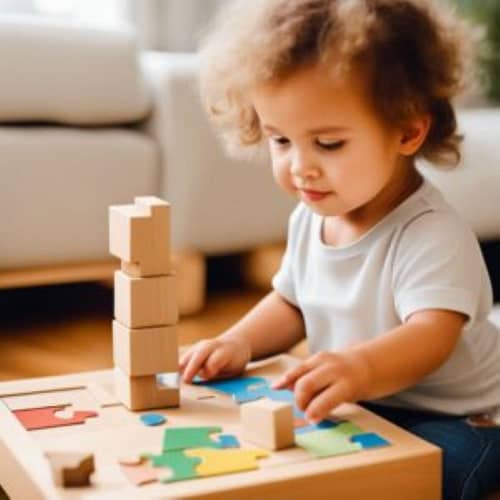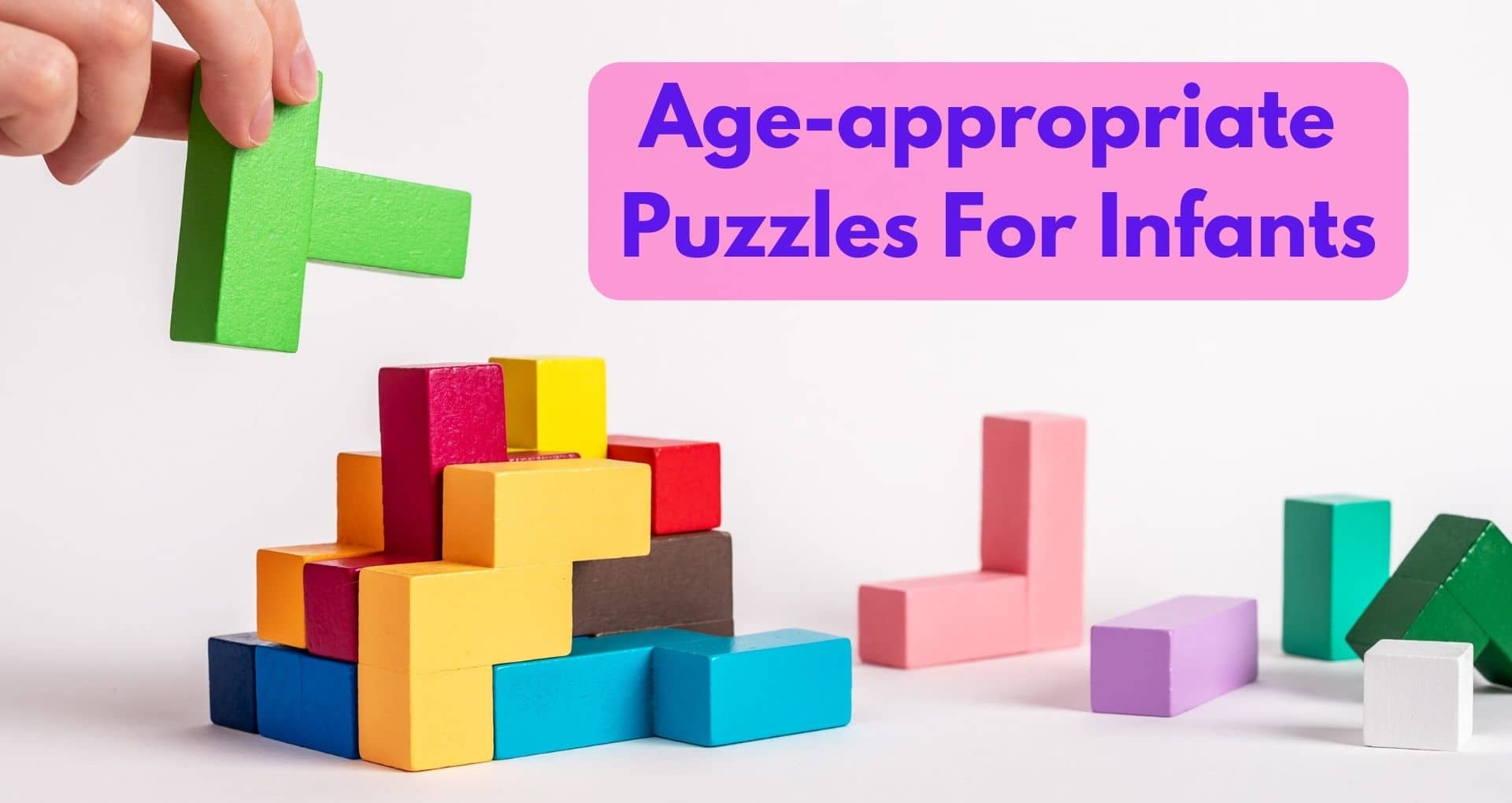Are you a new parent or caregiver wondering how to keep your little one engaged and entertained? Look no further! In this article, we will explore some age-appropriate puzzles that are perfect for infants.
Puzzles not only provide an enjoyable and stimulating playtime activity, but they also promote cognitive development and fine motor skills. So, if you’re ready to introduce your infant to the wonderful world of puzzles, keep reading for some great suggestions!
Puzzles for Infants
Puzzles are not only a fun and entertaining activity for infants, but they also provide numerous developmental benefits. From enhancing cognitive skills to promoting hand-eye coordination, age-appropriate puzzles can play a crucial role in a child’s early learning experiences. In this article, we will explore the benefits of puzzles for infants, factors to consider when choosing age-appropriate puzzles, different types of puzzles available in the market, as well as safety considerations and DIY options. So let’s dive in and discover the wonderful world of puzzles for infants!
Benefits of Puzzles for Infants
Engaging in puzzle play at an early age can offer a range of benefits for infants. Firstly, puzzles help develop problem-solving and critical thinking skills. As infants try to figure out how the pieces fit together, they are actively engaging their minds and improving their cognitive abilities. Moreover, puzzle play stimulates hand-eye coordination as infants manipulate and manipulate the puzzle pieces, improving their fine motor skills. This can have a positive impact on their ability to perform tasks that require precise hand movements, such as writing or using utensils.
Puzzles also contribute to the development of spatial awareness. As infants try to fit the puzzle pieces into the correct spots, they are learning to understand and manipulate space. This can have long-term benefits for their mathematical and spatial reasoning abilities. Furthermore, puzzle play promotes patience and perseverance. Infants learn to stay focused, experiment, and try different strategies until they successfully complete the puzzle. This sense of accomplishment can boost their self-confidence and motivate them to take on new challenges.
Factors to Consider When Choosing Age-Appropriate Puzzles
When selecting puzzles for infants, it is important to consider their age and developmental stage. Here are some factors to keep in mind:
1. Size and Complexity
Infants have limited motor skills and attention spans, so it is crucial to choose puzzles that are appropriately sized and have a manageable number of pieces. For younger infants, puzzles with bigger, chunkier pieces are ideal, while older infants can handle puzzles with smaller pieces and more complex designs.
2. Safety
Ensure that the puzzle pieces are made from non-toxic materials and do not pose a choking hazard. Look for puzzles with rounded edges and sturdy construction to prevent any harm or accidents during play.
3. Theme and Interest
Choose puzzles that align with the interests and preferences of your infant. Whether it’s animals, shapes, or familiar objects, selecting puzzles that capture their attention can make the learning experience more enjoyable and engaging.
4. Durability
Infants are known for their curious exploration and sometimes rough play. Opt for puzzles that are made from durable materials and can withstand the wear and tear of infant playtime.
Materials and Construction
Puzzles for infants are available in a variety of materials, each offering its own unique benefits. Common materials include wood, cardboard, and foam. Wooden puzzles are known for their sturdiness and durability, making them suitable for even the most enthusiastic infant players. Cardboard puzzles are lightweight and can be easily transported, while foam puzzles are soft and safe for infants to handle.
In terms of construction, puzzles with interlocking pieces provide a more challenging experience for infants, as they require more precise placement. On the other hand, puzzles with knobs or pegs on each piece are easier for infants to grasp and manipulate, making them ideal for younger children. Consider your infant’s developmental stage and preferences when choosing the puzzle construction that suits them best.
Also Check: What Are The Must-have Items For A Breastfeeding Corner In The Nursery?
Educational and Developmental Aspect
Puzzles for infants are not simply toys, but powerful educational tools. They support the development of key skills such as problem-solving, hand-eye coordination, fine motor skills, spatial awareness, and cognitive abilities. Through puzzle play, infants learn to recognize colors, shapes, and patterns, which lays the foundation for early math and language skills. Additionally, the process of trial and error that comes with puzzle solving enhances infants’ patience, persistence, and resilience.
Furthermore, puzzle play encourages infants to focus, concentrate, and engage their minds in a task, promoting concentration skills and attention span development. It also provides opportunities for social interaction when infants play puzzles with their caregivers or peers, fostering communication and teamwork. Overall, puzzles for infants foster holistic development and lay the groundwork for future learning experiences.
Safety Considerations
While puzzles are generally safe for infants, it is important to take certain precautions to ensure a safe play environment. Always supervise infants during puzzle play to prevent any choking hazards or injuries. Regularly inspect the puzzle pieces for any loose or broken parts that may pose a risk. Keep small puzzle pieces out of reach when not in use to avoid accidental swallowing or choking.
Additionally, ensure that the puzzle materials are non-toxic and free from harmful substances. Look for safety certifications or labels on the packaging to ensure the puzzle meets safety standards. By following these safety considerations, you can provide a secure and enjoyable puzzle play experience for your infant.
Popular Types of Puzzles for Infants

Source: TheTechBrain AI
There is a wide variety of puzzles available in the market specifically designed for infants. Let’s explore some popular types:
1. Animal Puzzles
Animal puzzles feature different animals and their corresponding shapes or pictures. They introduce infants to various animals, colors, and shapes, making them both educational and entertaining.
2. Shape Sorting Puzzles
Shape sorting puzzles help infants learn about different shapes and improve their problem-solving skills. They consist of a board with cutouts and various shapes that infants must fit into the corresponding holes.
3. Chunky Wooden Puzzles
Chunky wooden puzzles are perfect for younger infants as they feature large, easy-to-grasp pieces. These puzzles often have knobs or pegs on each piece, making them ideal for developing infants’ fine motor skills.
4. Puzzles with Large Knobs
Puzzles with large knobs are designed to help infants improve their grip and hand coordination. The knobs make it easier for infants to grasp and manipulate the puzzle pieces, enhancing their fine motor skills.
5. Nesting Puzzles
Nesting puzzles consist of multiple puzzles that can be stacked inside one another. They help infants understand size relationships, develop hand-eye coordination, and improve problem-solving skills.
6. Puzzle Boards
Puzzle boards are large puzzles that feature a variety of shapes or objects. Infants can place the corresponding pieces on the board, improving their spatial awareness, visual discrimination, and problem-solving abilities.
Interactive Puzzles and Apps
In addition to traditional puzzles, there are also interactive puzzles and puzzle apps available for infants. These digital options can provide a different sensory experience for infants and incorporate additional features such as sounds, animations, and touch interactions. However, it is important to limit screen time for infants and ensure that interactive puzzles and apps are used in moderation, under adult supervision, and in a way that complements hands-on play experiences.
DIY Puzzles for Infants
If you want to get creative and save some money, you can also make your own puzzles for infants. DIY puzzles can be made using materials such as cardboard, foam, or felt. Simply cut out shapes or pictures, laminate them for durability, and create corresponding cutouts or slots for infants to fit the pieces together. DIY puzzles allow you to customize the difficulty level and themes according to your infant’s interests and developmental stage.
How to Introduce Puzzles to Infants
Introducing puzzles to infants can be an exciting and rewarding experience. Start by selecting a puzzle that is age-appropriate and aligns with your infant’s interests. Begin with simpler puzzles and gradually increase the complexity as the infant becomes more familiar and confident with puzzle play. Demonstrate how to play with the puzzle by placing a few pieces in their correct spots or encouraging them to experiment with the pieces.
Observe your infant’s reactions and give them time to explore the puzzle independently. Offer gentle guidance and praise their efforts and accomplishments. Remember to make puzzle play a fun and interactive experience by engaging in conversation, asking questions about the puzzle, and encouraging problem-solving skills.
Puzzle Play Tips for Infants
Here are a few tips to enhance your infant’s puzzle play experience:
- Create a dedicated puzzle-play area: Set up a designated space for puzzles where your infant can focus and explore without distractions.
- Use verbal cues and prompts: Encourage your infant by providing verbal cues and prompts such as “Can you find the blue piece?” or “Where does this shape go?”
- Rotate puzzles: To keep the play experience fresh and engaging, rotate the puzzles regularly, offering new challenges and themes.
- Socialize through puzzles: Encourage your infant to play puzzles with siblings, friends, or caregivers. This promotes social interaction, communication, and teamwork.
- Celebrate accomplishments: Celebrate your infant’s puzzle-solving achievements with applause or small rewards. This positive reinforcement builds enthusiasm and motivation for future puzzles.
Conclusion
Introducing puzzles to infants can have a profound impact on their early development and learning. By choosing age-appropriate puzzles, considering materials and construction, embracing educational aspects, prioritizing safety, and exploring different types of puzzles, you can provide your infant with a stimulating and enjoyable play experience. Remember to actively engage in puzzle play with your infant, offering support, guidance, and praise. With puzzles, you can foster a love for learning, problem-solving, and exploration from a young age, setting the foundation for a lifetime of cognitive and intellectual growth.
